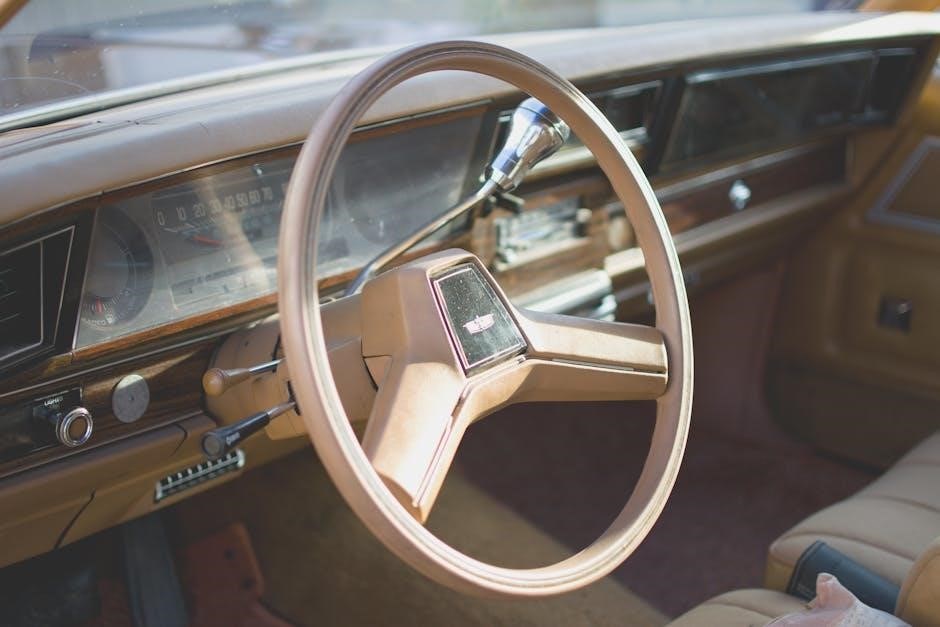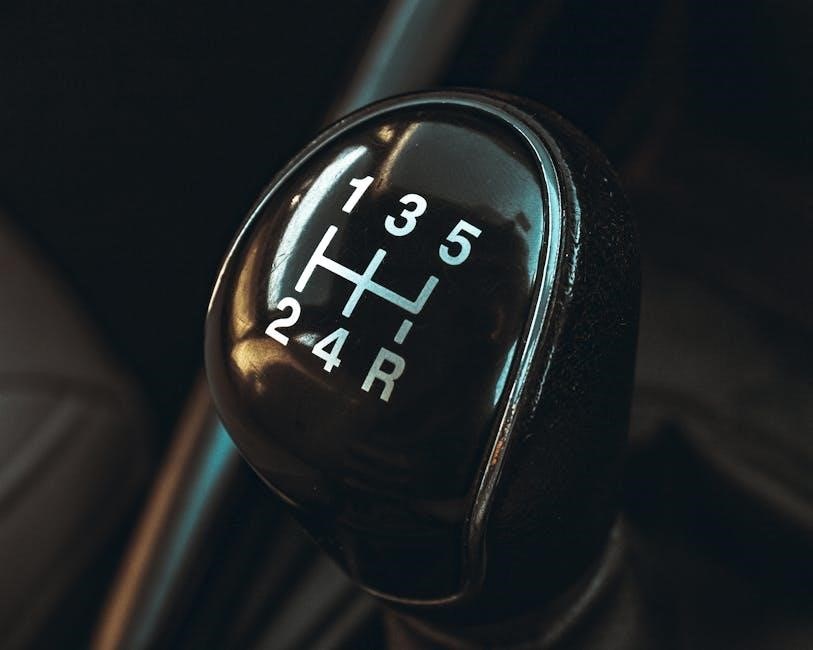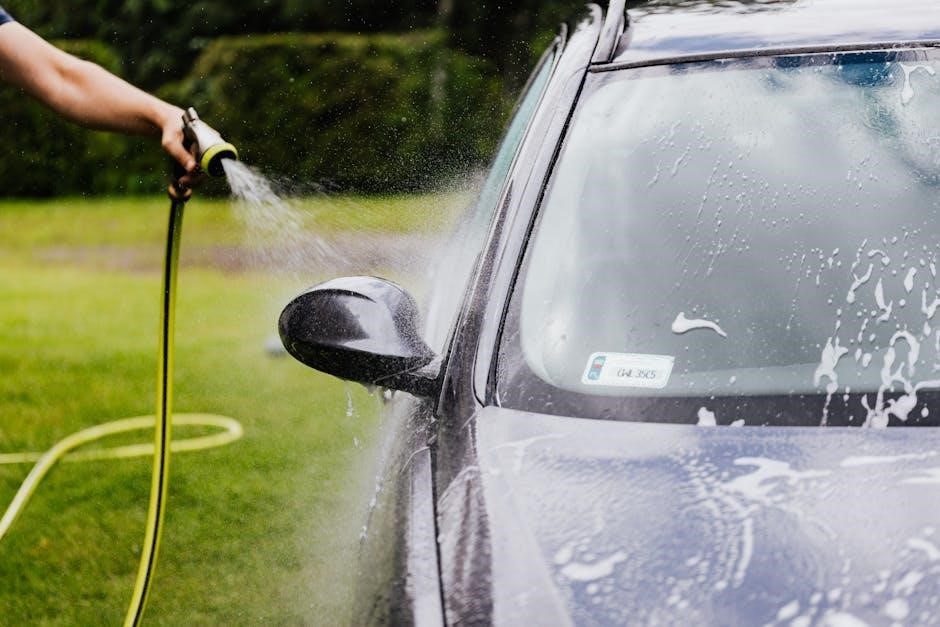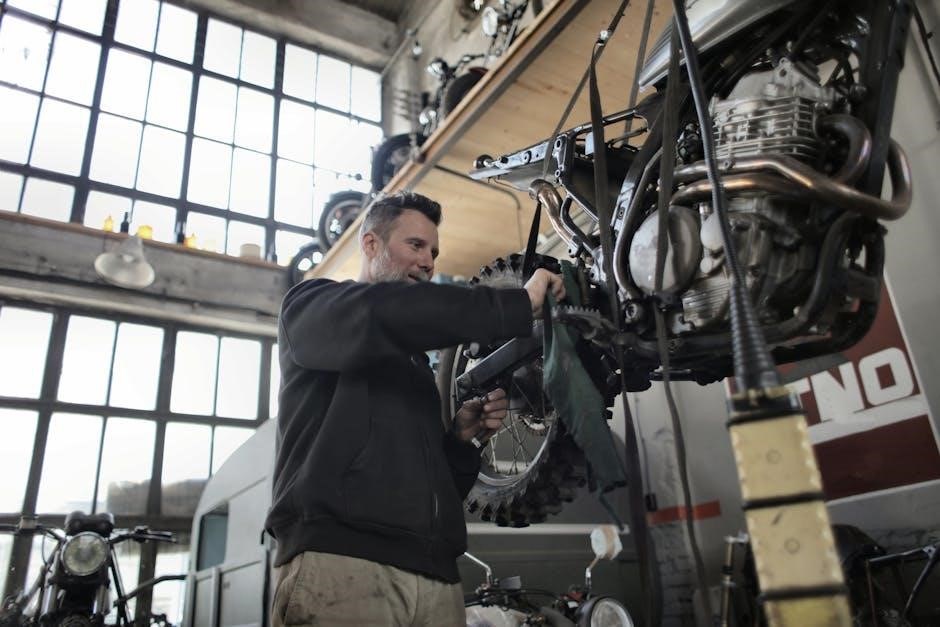Browning Auto 5 Manual: A Comprehensive Guide
This comprehensive guide provides detailed instructions for the Browning Auto 5, the first successful semi-auto shotgun․
It covers disassembly, cleaning, reassembly, and troubleshooting, drawing from manuals, diagrams, and expert gunsmith insights to help owners maintain their firearms․
The Browning Auto 5, often shortened to A5, stands as a monumental achievement in firearm design, particularly renowned as the first successful semi-automatic shotgun․
Its innovative recoil-operated mechanism distinguished it from contemporaries, establishing a new benchmark in shotgun technology․
This guide aims to provide owners and enthusiasts with a thorough understanding of this iconic firearm․
Covering everything from its historical context to detailed disassembly and reassembly procedures․
Whether you’re a seasoned gunsmith or a new owner․
This manual offers valuable insights into maintaining and troubleshooting your Browning A5․
We will explore its unique features, step-by-step instructions, and essential maintenance practices, ensuring its continued reliability and performance․
Brief History and Significance
The Browning Auto 5 boasts a rich history dating back to its design by John Browning, a prolific inventor in firearm technology․
Introduced in the early 20th century, the Auto 5 revolutionized shotgun design with its recoil-operated mechanism․
This innovation allowed for faster follow-up shots and increased overall efficiency compared to traditional pump-action shotguns․
The Auto 5’s impact extended beyond its technical achievements, becoming a favorite among hunters, sport shooters, and even military personnel․
Its reliability and robust construction contributed to its enduring legacy․
The Browning Auto 5’s significance lies not only in its historical context but also in its lasting influence on subsequent firearm designs․
Its innovative features paved the way for future advancements in semi-automatic shotguns․
Overview of the Browning Auto 5 Design
The Browning Auto 5 features a distinctive recoil-operated system, setting it apart from other shotgun designs․
Upon firing, the barrel and bolt recoil together, cycling the action and ejecting the spent shell․
This mechanism allows for rapid follow-up shots, enhancing the shooter’s efficiency․
The Auto 5 also incorporates a unique long-recoil system, contributing to its smooth and reliable operation․
Its design includes adjustable friction rings, allowing users to tailor the shotgun’s performance to different loads․
The receiver is typically made of steel, providing durability and strength․
The Auto 5’s design prioritizes ease of use and maintenance, with relatively simple disassembly and reassembly procedures․
Its robust construction and carefully engineered components contribute to its long-lasting reputation․
The Auto 5’s design has influenced numerous other firearms, solidifying its place in shotgun history․

Safety First: Before You Begin
Prioritize safety when handling any firearm․
Before disassembly, ensure the Browning Auto 5 is unloaded․
Familiarize yourself with safe gun handling practices and wear appropriate safety gear throughout the process․
Importance of Safe Gun Handling
Safe gun handling is paramount when working with any firearm, including the Browning Auto 5․
Negligence can lead to accidental injury or even death, making adherence to safety rules crucial․
Always treat every firearm as if it is loaded, even after you’ve checked it․
Keep your finger off the trigger until you are ready to fire and be certain of your target and what is beyond it․
Never point the muzzle at anything you do not intend to shoot․
Store firearms unloaded and secured, away from children and unauthorized individuals․
Familiarize yourself with the specific safety mechanisms of the Browning Auto 5 and ensure they are functioning correctly․
Checking the Firearm is Unloaded
Before you begin any disassembly, cleaning, or maintenance on your Browning Auto 5, it is crucial to ensure that the firearm is completely unloaded․
This is the most important safety step to prevent accidental discharge․
First, point the muzzle in a safe direction․
Then, engage the safety mechanism․
Next, carefully open the action of the shotgun․
Visually inspect the chamber and magazine to confirm that no shells are present․
If a shell is present, carefully remove it․
Double-check both the chamber and magazine to ensure they are empty․
After visually confirming that the firearm is unloaded, it is advisable to perform a physical check by running your finger along the chamber to ensure no rounds remain․
Necessary Tools and Equipment
To properly disassemble, clean, and maintain your Browning Auto 5, you’ll need to gather the necessary tools and equipment․
A well-equipped workspace will make the process safer and more efficient․
Essential tools include a set of screwdrivers (both flathead and Phillips head) that fit the screws on your firearm․
You’ll also need a suitable cleaning rod, small picks for removing debris, and a wrench if required for your specific model․
Additionally, gather cleaning supplies, such as gun cleaning solvent, lubricant, and patches․
A soft-bristled brush is useful for scrubbing hard-to-reach areas․
Finally, a gun mat or workbench will protect your firearm and provide a stable surface․
Having these tools on hand will ensure a smooth and effective cleaning and maintenance process․

Complete Disassembly Guide
This section provides step-by-step instructions for the complete disassembly of your Browning Auto 5․
Follow these instructions carefully to safely and effectively take apart your firearm for cleaning and maintenance․
Step-by-Step Disassembly Instructions
Before beginning, ensure the firearm is unloaded and safe․
Start by removing the forearm, often held by a screw or latch․
Next, with the action open, carefully slide the barrel forward and off the receiver․
After the barrel is removed, focus on the bolt assembly․
Retract the bolt and locate the bolt handle; remove it by pulling rearward while using the link to push the bolt forward․
The bolt assembly should now slide out․
Finally, proceed to the trigger group, typically secured by pins that must be carefully punched out from left to right․
Remember to keep parts organized!
Removing the Barrel
Before attempting to remove the barrel, always ensure the Browning Auto 5 is completely unloaded and that the chamber is empty․
With the firearm confirmed safe, begin by field stripping the shotgun to its basic components․
This generally involves removing the forearm first․
Once the forearm is detached, locate the barrel retaining mechanism, which may vary slightly depending on the model․
Typically, the barrel is held in place by a friction fit or a simple locking system․
Carefully grasp the barrel near the receiver end and, while applying gentle pressure, slide it forward, away from the receiver․
Avoid using excessive force, as this could damage the barrel or receiver․
Disassembling the Forearm
Disassembling the forearm of a Browning Auto 5 requires careful attention․
First, ensure the shotgun is unloaded․
The forearm is typically held in place by a combination of friction and a retaining mechanism․
Begin by gently pushing the forearm forward, towards the muzzle, to relieve any pressure․
Next, locate the forearm retaining latch or button, often found on the underside of the forearm․
Depress or manipulate this latch to release the forearm from the magazine tube․
Once the latch is disengaged, carefully slide the forearm forward and off the magazine tube․
Be mindful of any small parts, such as friction rings or springs, that may be housed within the forearm assembly․

Removing the Bolt Assembly
Removing the bolt assembly from a Browning Auto 5 is a crucial step in the disassembly process․
Begin by ensuring the firearm is completely unloaded․
With the action open, locate the bolt handle;
While pulling rearward on the bolt handle, use the link to push the bolt forward․
This maneuver will help to disengage the bolt handle from its locking position․
Once the bolt handle is disengaged, carefully slide the entire bolt assembly forward and out of the receiver․
Pay close attention to the orientation of the bolt and any associated parts, such as the locking block or rollers․
These components may become dislodged during removal, so it is important to keep track of their positions for reassembly․
Trigger Group Disassembly
Disassembling the trigger group of a Browning Auto 5 requires careful attention․
Before starting, ensure the firearm is unloaded and the bolt assembly has been removed․
Locate the pins that secure the trigger group to the receiver․
Using appropriate punches, carefully drive out these pins from left to right, as this is the standard direction for pin removal in this firearm․
Once the pins are removed, the trigger group should be able to be carefully detached from the receiver․
Be mindful of any small parts or springs that may be under tension․
Disassemble the trigger group in a clean and organized workspace, keeping track of each component․
Take photos or make notes to assist with reassembly․
Detailed Instructions for Each Component
Once the trigger group is disassembled, focus on each component individually․
For the hammer, inspect for wear or damage on the contact surfaces․
The sear should be examined for any rounding or chipping that could affect its engagement with the hammer․
Carefully clean each spring, ensuring there is no rust or debris hindering its function․
The safety mechanism should be inspected to confirm it moves freely and engages securely․
Each pin must be checked for bending or damage․
Note the orientation of each part as it is removed to aid in reassembly․
Lubricate lightly with a quality gun oil before reassembling the components․
Pay close attention to the relationship between the various parts, ensuring proper function before moving on․

Cleaning and Maintenance
Proper cleaning and maintenance are vital for the Browning Auto 5․ Regular cleaning, lubrication, and inspection prevent issues․ This ensures reliable performance and prolongs the firearm’s life․
Proper Cleaning Techniques
Effective cleaning begins with a disassembled firearm, ensuring access to all components․ Utilize a suitable cleaning rod, small picks, and possibly a wrench, based on your Auto 5 model․ Remove powder residue and fouling from the barrel using appropriate solvents․
Pay special attention to the action, bolt face, and trigger mechanism․ Employ brushes and patches to eliminate debris․ Wipe down all surfaces with a clean cloth․ Inspect for lead or copper buildup, addressing it with specialized cleaners․ Ensure all solvent residue is removed before proceeding to lubrication․ This meticulous process guarantees optimal firearm functionality and longevity․

Lubrication Guidelines
Proper lubrication is crucial for smooth operation and preventing wear within your Browning Auto 5․ Apply a thin coat of high-quality gun oil to all moving parts, including the bolt, receiver rails, and trigger components․ Avoid over-lubrication, as excess oil can attract dirt and grime, hindering performance․
Focus on areas experiencing friction during cycling․ Lightly grease the action spring and any parts showing signs of wear․ Consult your specific model’s manual for recommended lubrication points․ After lubrication, wipe off any excess oil to prevent buildup․ Regular, mindful lubrication will ensure reliable function and extend the life of your Auto 5․
Inspection for Wear and Damage
Regularly inspect your Browning Auto 5 for signs of wear and potential damage to ensure safe and reliable operation․ Carefully examine the barrel for any bulges, dents, or pitting․ Check the bolt face and locking lugs for excessive wear or cracks, which could compromise the firearm’s integrity․
Inspect the action spring for signs of fatigue or breakage․ Pay close attention to the trigger mechanism, looking for worn sears or pins․ Also, examine the stock and forearm for cracks or looseness․ Replace any worn or damaged parts immediately to maintain optimal performance and prevent malfunctions․ A thorough inspection can identify potential issues before they lead to serious problems․

Reassembly Guide
This section provides step-by-step instructions for reassembling your Browning Auto 5 shotgun․ Follow these directions carefully to ensure proper function and safety after cleaning and maintenance․
Step-by-Step Reassembly Instructions
Begin reassembly by ensuring all parts are clean and lightly lubricated according to the lubrication guidelines․ Work in a well-lit area with ample space․ Start with the trigger group, carefully aligning components and securing them with the correct pins, noting the direction of insertion․ Next, reinstall the bolt assembly, ensuring the locking rollers are correctly positioned within the bolt head․ Gently insert the reassembled bolt into the receiver․ Then, reattach the forearm, making sure it is properly aligned and secured․ Finally, reattach the barrel, ensuring it is firmly in place and correctly aligned with the receiver․ After each step, test the functionality of the assembled components before moving on to the next․
Reassembling the Trigger Group
Reassembling the trigger group requires careful attention to detail․ Begin by positioning the hammer and sear, ensuring they engage correctly․ Insert the necessary pins from left to right, as is typical for this firearm, securing these components․ Make sure all springs are correctly seated and functioning․ The trigger must move freely without binding․ Double-check that the safety mechanism engages and disengages smoothly․ Ensure all screws are tightened properly, taking care not to overtighten and strip the threads․ After reassembly, manually test the trigger group’s functionality by dry-firing, verifying that the hammer falls correctly and the safety functions as intended․ If any issues are observed, disassemble and re-examine each component․
Reinstalling the Bolt Assembly
Reinstalling the bolt assembly requires precision․ Begin by ensuring the locking rollers are correctly positioned within the bolt head․ Carefully insert the bolt assembly into the receiver, guiding it along the rails․ While pulling rearward on the bolt handle, use the link to help push the bolt forward, allowing the bolt handle to engage correctly․ Ensure the bolt moves smoothly within the receiver without any binding․ Check the proper assembly by pulling back the operating handle to its locked open position․ Verify that the bolt locks securely․ The locking rollers must withdraw correctly when the bolt is in battery․ If any resistance is felt, remove the bolt and re-examine for proper alignment․ Test the action several times to confirm smooth operation before proceeding․

Reattaching the Forearm and Barrel
Reattaching the forearm and barrel requires careful alignment․ First, ensure the recoil spring and friction rings are correctly positioned on the magazine tube․ Slide the forearm over the magazine tube, aligning it with the receiver․ Next, carefully slide the barrel into the receiver, ensuring it seats properly against the recoil spring assembly․ Secure the barrel by tightening the barrel retaining nut or screw, depending on the model; Ensure the forearm is snug against the receiver and that the barrel is firmly attached․ Check for any gaps or misalignment․ Cycle the action to confirm the barrel and forearm move freely without binding․ Verify the barrel is securely locked in place and that the action operates smoothly before proceeding further․

Troubleshooting and Common Issues
Addressing malfunctions in your Browning Auto 5 requires systematic diagnostics; Identifying common problems, from cycling issues to worn parts, can be simplified with the right knowledge and resources for effective repairs and maintenance․
Addressing Common Problems
When troubleshooting a Browning Auto 5, start by identifying the specific issue․ Common problems include failures to feed, extract, or eject cartridges․
Examine the recoil spring, friction rings, and magazine tube for wear, damage, or incorrect assembly․ Ensure the gas ports are clean and unobstructed․
Check the condition of the firing pin and extractor․
If experiencing light strikes, inspect the firing pin spring․
For cycling issues, verify the correct load for your shotgun․
Consulting the owner’s manual aids in understanding the firearm’s operation and resolving common malfunctions․
Seeking advice from experienced gunsmiths can provide valuable insights for complex issues․
Identifying and Replacing Worn Parts
Regular inspection of your Browning Auto 5 is crucial for identifying worn parts․
Key areas to check include the recoil spring, friction pieces, and the extractor․
Look for signs of wear such as cracks, excessive play, or deformation․
The firing pin should be inspected for damage or breakage․
The magazine spring should be checked for proper tension․
Replacing worn parts ensures reliable firearm operation․
Consult the parts diagram to identify and order the correct replacements․
When replacing parts, ensure proper fitting and function․
Consider seeking assistance from a qualified gunsmith․
Prioritize safety․

Additional Resources
Find Browning Auto 5 manuals and diagrams online․
Consult gunsmith forums for expert advice and troubleshooting tips․
Explore video tutorials demonstrating disassembly and reassembly procedures for visual guidance and clarity․
Where to Find Manuals and Diagrams
Locating the correct manual and diagrams for your Browning Auto 5 is crucial for proper maintenance and repair․ Start by checking the Browning website for digital versions of owner’s manuals․ Many online gun forums and enthusiast sites also host scanned copies of older manuals․
Gun parts retailers often provide exploded diagrams that are incredibly helpful for disassembly and reassembly․ Look for reputable sources to ensure the accuracy and completeness of the information․ Always cross-reference information from multiple sources, and when in doubt, consult a qualified gunsmith․ These resources will ensure you understand your firearm․
